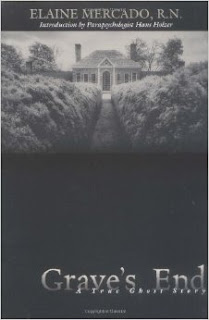Paranormal Activity (2009)
Katie Featherston, Micah Sloat
Directed by Oren Peli
RT: 1:26:00
Katie Featherston, Micah Sloat
Directed by Oren Peli
RT: 1:26:00
In 1999, a film was released nationwide with the following
notice at the beginning
In October of 1994 three student filmmakers
disappeared in the woods near Burkittsville, Maryland while shooting a
documentary… A year later their footage was found.
Of course, this comes from
the love-it-or-hate-it hit, The Blair
Witch Project. Shot on a budget of about $35,000, it went on to rake in
nearly a quarter billion at the box
office. It was part ghost story, part witch hunt, part documentary. At the
time, it presented an original concept: found footage. By no means was this
the first time such a technique was used, as it was also used in 1980’s Cannibal Holocaust (the shooting title
for that film was Green Inferno,
which was the release title of Eli Roth’s own cannibal film), but it did bring it to the mainstream in a fun new way. As a writer, I’d
be remiss if I didn’t note that it is similar to epistolary novels such as Frankenstein.
Ten
years later, the film Paranormal Activity
debuted with a similar premise. It wasn’t the first since 1999, but it was arguably
the scariest since Blair Witch.
What
worked in the new film is what worked in the Blair Witch: the unseen. We spend the bulk of the movie as clueless
as the actors as to what is happening. Because of the style it’s shot in, we
aren’t privy to anything that they (ultimately) won’t be privy to. I say
“ultimately” because at night, when they’re asleep, we get to watch. Like voyeurs
on the 20th floor looking down on somebody about to be mugged, all
we can do is scream for them to look out. Of course, they can’t hear us.
Paranormal Activity takes advantage of
both the jump scare and a build-up in suspense. It can’t really be called a
slow-burn, because the first scares happen on “Night 1,” the first night of
available footage.
Quick
background if you haven’t seen the movie: Katie and Micah are living in a
suburban San Diego home. She is an English student, and he is a day trader.
They have been together about three years, but have only recently moved in
together. It wasn’t until they began living together that Micah discovered
Katie had been “haunted” her entire life by an unknown entity. To capture
evidence, he buys a video camera and…
We get
to see multiple nights following his camera purchase, each one more frightening
than the last. Of course, Micah wants to capture the best footage possible, so
he tries to provoke the entity through a Ouija board… And succeeds!
On
Night 21, three weeks since buying the camera, the entity finally gets to Katie
and Micah.
It’s no
secret I’m not a fan of found footage films, that they are gimmicky at best and
annoying (motion sickness anybody?) at worse. However, in Paranormal Activity it works. It harkens to the many ghost hunting
shows we see on TV now, but does so in a low-tech way. Yes, we get the EVP and
some strange footage, but we don’t get spirit boxes and infrared. It doesn’t
try to shove it in our face that it’s going for “found footage,” or that it’s
like any other ghost hunt. It’s a raw take on the original ghost story, and free of soundtracks and over-production, it makes you feel like you were a part of it..
What I
think makes it work, is that it’s a simple telling of a simple story. It relies
not on special effects or great plotting, but teases out the viewer’s own fears
of the supernatural. Simply, it allows the audience to be haunted without ever
dealing with their own ghost.






